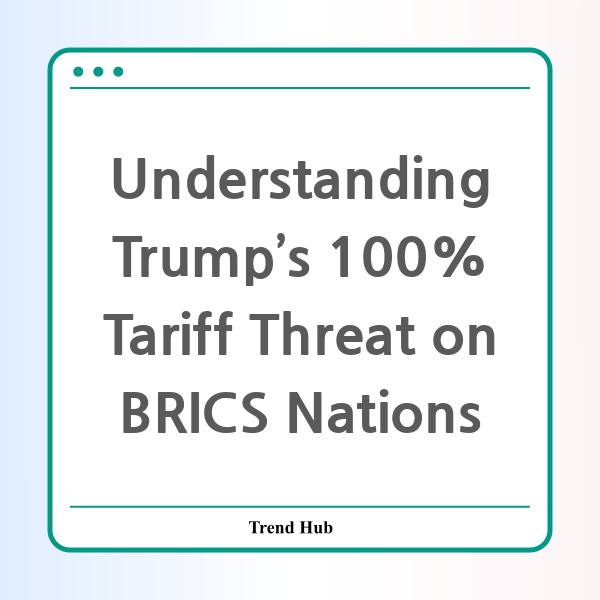* This website participates in the Amazon Affiliate Program and earns from qualifying purchases.

Could the BRICS nations face a looming financial storm? Recently, U.S. President Donald Trump made headlines with a bold warning to the BRICS nations – Brazil, Russia, India, China, and South Africa – that they might face 100% tariffs if they attempt to bypass the U.S. dollar in international trade.
This announcement did not come out of the blue. With ongoing discussions about the BRICS coalition potentially developing their own currency, Trump's declarations highlighted deep-rooted concerns about a shift away from the dollar as the world’s reserve currency.
On February 13, 2025, Trump stated during a press conference: "If any trading gets through, it'll be 100% tariff, at least." This statement comes as India’s Prime Minister Narendra Modi was visiting the U.S., where he met with influential figures including Tesla CEO Elon Musk, further underscoring the geopolitical complexities at play.
The implications of such tariffs could be enormous. Trump’s administration is pushing towards a reciprocal tariff strategy, meaning if a country imposes tariffs on U.S. goods, the U.S. will respond with similar tariffs. This plan aims to re-establish what Trump considers fair trade relations.
As the world's sixth-largest economy and an active member of BRICS, India is particularly impacted by this warning. Trump criticized India’s high tariff rates, emphasizing that the U.S. would impose equivalent tariffs if the trend of protectionism continues. In his direct approach, he has questioned the fairness of the current trading system, suggesting that it disproportionately disadvantages the U.S.
Furthermore, the potential establishment of a BRICS currency could signal a significant shift in global economic dynamics. The group has been vocal about reducing dependence on the dollar, advocating for an alternative that could stabilize their economies against fluctuating U.S. policies.
This escalating tension raises critical questions about the future of international trade. Will the BRICS nations coalesce around a new currency? How will the U.S. respond to moves that challenge its economic supremacy? And importantly, how will consumers and businesses be affected by these potential tariffs?
As Trump continues to threaten higher tariffs, the future of trade relationships hangs in the balance. Businesses within BRICS countries should prepare for the possibility of increased tariffs and consider alternative trade strategies. In an interconnected global economy, these shifts could have ramifications not just for BRICS nations but for economies worldwide.
In conclusion, the possibility of 100% tariffs on BRICS nations could reshape the landscape of global trade. As nations navigate these tumultuous waters, it’s crucial to stay informed and adaptable to new economic realities.
* This website participates in the Amazon Affiliate Program and earns from qualifying purchases.